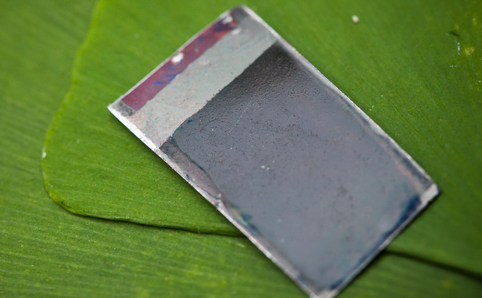In case you missed it, do check out the New Yorker profile of Daniel Nocera, a scientist who has designed a “a cheap, playing-card-size coated-silicon sheet that, when placed in a glass of tap water and exposed to sunlight, split the water into hydrogen and oxygen.” The device is able to produce energy through a modified form of photosynthesis. He calls this system an “artificial leaf” and it could be a huge breakthrough in the field of of sustainable energy.
The key, though, is that Nocera did not design this system with wealthy consumers in mind. Rather, it’s simplicity, durability and low cost make it and ideal energy solution for the 1.3 billion people who lack basic electricity. The article is behind a pay wall, but here’s a snippet of the abstract.
Since the early eighties, Nocera has focussed on providing energy for the world’s poorest people. “If there’s one thing that’s unique to the technology development I’ve done, it’s been doing science with the super-poor in mind.” His emphasis is largely humanitarian; it also arises from his belief, as a scientist, that the only way to meet the world’s projected energy needs without causing intolerable environmental harm will be to work, in effect, from the bottom up—an approach that’s very different from the ones that dominate energy research.
I do reject the idea that “humanitarian” motives are required to develop low-cost, sustainable energy solutions tailored for developing world countries. The fact is, countries that are growing demographically and economically (say, India or Nigeria) need lots and lots of energy to develop. If they use the same sources of energy as wealthy countries used, like coal, our planet is doomed. Earth can’t take India using to coal to power its 1 billion people. There’s nothing particularly “humanitarian” about wanting to avoid a global ecological catastrophe. It’s about self interest!
The UN this year launched a new initiative to this end called “Sustainable Energy for All.” The goal of this initiative is by 2030, providing universal access to modern energy services; doubling the global rate of improvement in energy efficiency; and doubling the share of renewable energy in the global energy mix.
We have a long way to go to reach these goals, but innovators like Nocera are helping to lead the way to a cleaner energy future.
